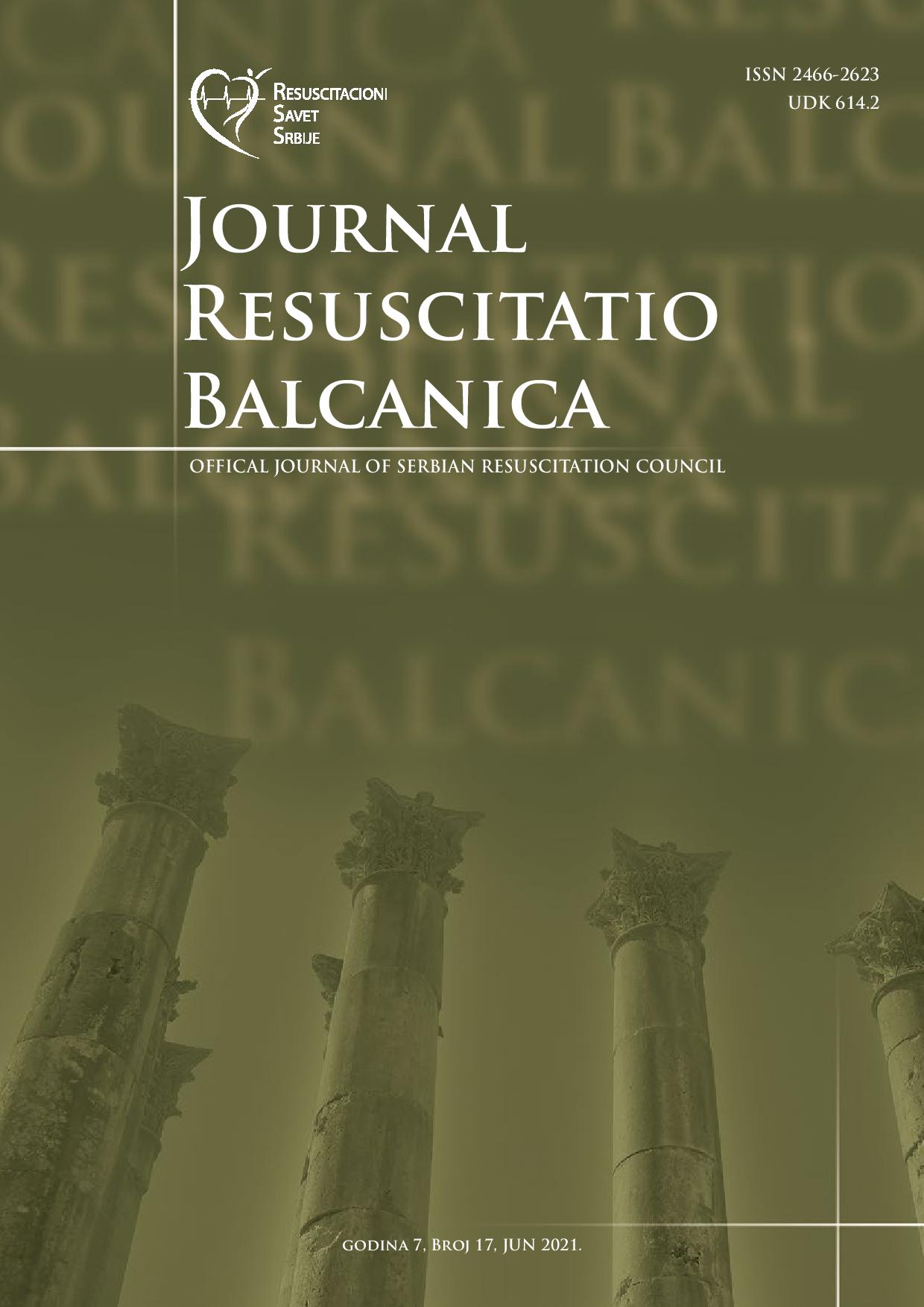Проблемы с трахеостомическими канюлями у пациентов с COVID-19: причины и способы решения
Sažetak
Patients with severe lung injury due to COVID-19 are often in need of mechanical ventilation. Due to the predicted length of invasive respiratory support, tracheostomy is commonly indicated to improve patient comfort, to reduce the need for sedation and to allow safer airway care. In this article we report two clinical cases of patients with COVID-19, who suffered cardiac arrest due to problems with tracheostomy canula placement.
The first case report is regarding a 74-year-old patient, who was transported to CT from the ICU. Problems first occurred in the elevator, where specialist were forced to switch to bag ventilation, when the oxygen supply ran out. As a result, an episode of desaturation to 80% was registered. Upon arriving in the ICU, the patient was connected to a mechanical ventilator, however ventilation was ineffective: peak pressure was more than 40 cmH2O and the tidal volume was less than 100 ml. Debridement of the trachea was performed, the position of the cannula was secured with no effect. While preparing for oropharyngeal intubation, the patient’s saturation dropped to 70%, haemodynamics were unstable (BP 76/40), ECG showed bradycardia of 30 bpm, which quickly turned to asystole. Cardiopulmonary resuscitation was performed and the patient was intubated, mechanical ventilation was effective. The total time of cardiac arrest was around 2 minutes, when ROSC was achieved and sinus rhythm was registered on the ECG. In 6 hours after ROSC signs of acute coronary syndrome were registered, the patient received treatment accordingly. Despite the complications, the patient’s condition improved and he was transferred to the therapeutics ward and later discharged home with no signs of neurological impairment.
The second case presents a similar clinical situation with an alternate outcome. A 32-year-old patient with COVID-19 was transferred to ICU due to signs of respiratory distress. His condition worsened and the patient was intubated, and soon percutaneous dilatational tracheostomy was performed. On day 9 of treatment in ICU an episode of desaturation to 75% was registered. Debridement of the trachea was not possible due to a block in the cannula. Due to rapid demise in the patient’s condition, the cannula was removed and the patient was intubated. After bronchoscopy, re-tracheostomy was performed. During the procedure, it was noted that the standard cannula was displaced at an angle to the posterior wall of the trachea. The cannula was replaced by an armored cannula. In the following hours, hypoxemia was observed, as well as subcutaneous emphysema of the patient’s face and upper body. Applying a thoracic X-ray, a left-side pneumothorax was diagnosed, which was urgently drained. In the following days of intensive care the patient’s condition gradually improved, mechanical ventilation was effective and signs of respiratory distress were fading. Neurologically the patient was responsive, able to perform simple tasks. Unfortunately, on the 15th day of ICU care the patient’s condition worsened: his fever spiked to 39-40,2C, CRP was 149, and CT showed signs of ARDS progression and vasopressors were administered due to hemodynamic instability. An episode of desaturation to 88% was noted. It was assumed that the tracheostomy cannula had been displaced, which was not proven by bronchoscopy. Later that day, while turning the patient to the side, bradycardia was noted on the monitor with progression to asystole. Cardiopulmonary resuscitation was performed for 5 minutes until ROSC. The tracheostomy cannula was then removed, due to inadequate ventilation and the patient was intubated and ventilated through an IT tube. After ROSC the patient’s neurological status was closely monitored. Without sedation the patient was unconscious (coma), non-responsive, hyporeflexive with little response to pain stimuli. In two weeks his neurological condition was regarded as a vegetative state (GCS -6).
Reference
2. Chiang SS, Aboutanos MB, Jawa RS, Kaul SK, Houng AP, Dicker RA, Guo WA. Controversies in Tracheostomy for Patients With COVID-19: The When, Where, and How. Respir Care. 2020 Nov;65(11):1767-1772. doi: 10.4187/respcare.08100. Epub 2020 Sep 1. PMID: 32873749

